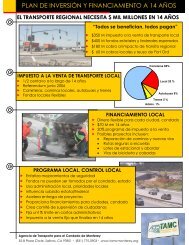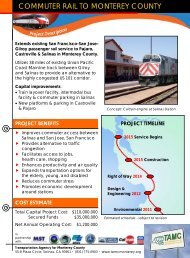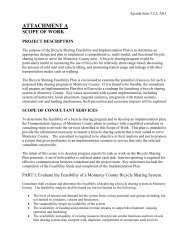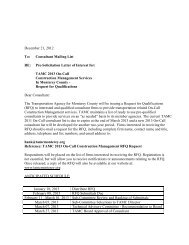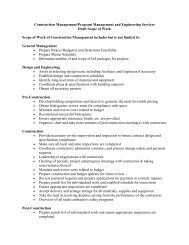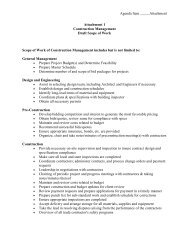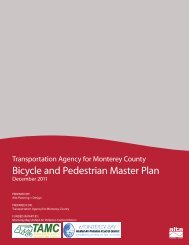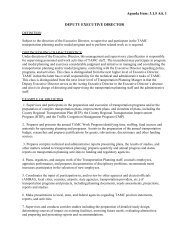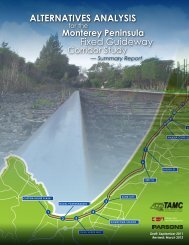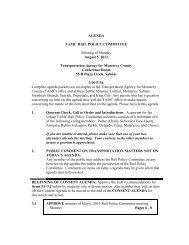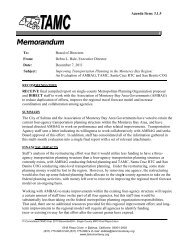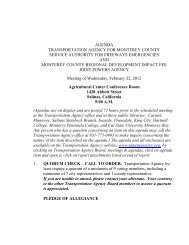156 Toll Road Study and Appendices - Transportation Agency for ...
156 Toll Road Study and Appendices - Transportation Agency for ...
156 Toll Road Study and Appendices - Transportation Agency for ...
- No tags were found...
You also want an ePaper? Increase the reach of your titles
YUMPU automatically turns print PDFs into web optimized ePapers that Google loves.
Monterey Bay area is a prime recreational destination, resulting in Highway <strong>156</strong> experiencinghigh visitor traffic. During the peak visitor season, summer weekends, traffic volumes more th<strong>and</strong>oubles, compared to a typical winter weekday. In addition, to travelers experiencing heavytraffic volumes approximately 8% of the traffic is trucks.Highway 1 <strong>and</strong> Highway 101 are both four-lane facilities to the west <strong>and</strong> east of Highway <strong>156</strong>,respectively. The approximately 4-mile long section of Highway <strong>156</strong> between these two, fourlanefacilities is a two-lane facility. When higher traffic volumes are present, congestion occursat several pinch points along the route. In the eastbound direction, congestion occurs whereHighway <strong>156</strong> narrows from two lanes to one lane, east of Castroville Boulevard <strong>and</strong> at theHighway <strong>156</strong> eastbound to Highway 101 northbound loop ramp. Highway <strong>156</strong> congestionoccurs, especially when traffic volumes on Highway 101 are high. In the westbound direction,congestion occurs where Highway 101 southbound to Highway <strong>156</strong> westbound intersectsHighway <strong>156</strong>. Congestion occurs in both directions at the unsignalized intersections on thenorth side of Highway <strong>156</strong> that provide access to the local residential communities.In addition, Highway <strong>156</strong> experiences a collision rate of approximately 21% greater than thestate average with 182 collisions occurring on Highway <strong>156</strong> between July 1, 2007 <strong>and</strong> June 30,2010. 3Under traditional funding, what are the current fundinggaps?Caltrans has developed a project fact sheet with estimated construction capital costs. Table 1,Route <strong>156</strong> West Corridor Capital Costs provides the anticipated cost <strong>for</strong> the project phases:Table 1Highway <strong>156</strong> West Corridor Capital CostsPhase 1 Phase 2FundingSecuredProject Approval <strong>and</strong> Environmental Document (PA & ED) $10 M -- --Plans Specifications <strong>and</strong> Estimates (PS&E) $12 M -- --Right-of-Way (ROW) Acquisition $33 M $50 M -- --Construction $60 M $103 M -- --*Excludes $30 M of local traffic impact fees.FundingGapTotal $109 M $159 M $44 M $ 224 M3State of Cali<strong>for</strong>nia Department of <strong>Transportation</strong>, “Route <strong>156</strong> West Corridor Environmental Impact Report / EnvironmentalAssessment with Finding of No Significant” (January 2013)[ 4 ] STATE ROUTE <strong>156</strong> <strong>Toll</strong>ing Traffic <strong>and</strong> Revenue <strong>Study</strong>



